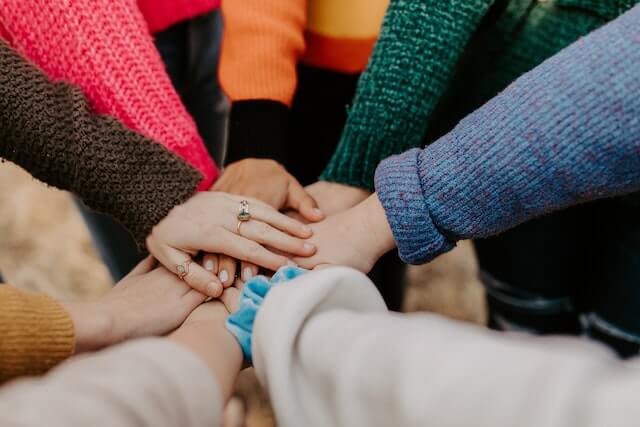Why Is It Important To Engage Communities In Preparedness Efforts – A Comprehensive Guide!
Everyone needs to join in getting ready for emergencies together. When we all work together, we can make sure everyone stays safe.
Why Is It Important To Engage Communities In Preparedness Efforts, by getting involved, we can make sure our community is strong and ready to handle anything that comes our way.
It’s really important to involve communities in getting ready for emergencies. When everyone works together, we can make sure everyone stays safe. By getting involved, we can make sure our community is strong and ready to handle anything that comes our way.
In this article, we’ll discuss Why Is It Important To Engage Communities In Preparedness Efforts is vital for keeping everyone safe and prepared.
Table of Contents:
Why Community Engagement Matters in Disaster Preparedness? – Get Involved Now!
Why Is It Important To Engage Communities In Preparedness Efforts, because it involves people planning and preparing for emergencies. When communities are engaged, everyone works together to identify risks, develop plans, and take action to keep themselves and others safe during disasters.
By involving community members, we tap into local knowledge and resources that can help us better understand the specific hazards and challenges each community faces. This allows us to tailor preparedness plans to meet the unique needs of the people living there.

Moreover, community engagement fosters a sense of ownership and responsibility among residents. When people feel involved in the process, they are more likely to take preparedness actions seriously and follow through with them.
Additionally, community engagement builds trust and strengthens relationships between residents, local authorities, and organizations involved in disaster response. This collaboration ensures smoother coordination and more effective response efforts when disasters strike.
When Communities Are Involved? – The Timing of Engagement!
It’s crucial to involve communities in disaster preparedness efforts at the right time. Here’s why timing matters:
- Before Disaster Strikes: Community engagement should begin before any disaster occurs. This allows for adequate planning, training, and awareness-building to prepare community members for potential hazards.
- During Planning Phases: Communities should be involved in the planning stages of preparedness efforts. This includes developing emergency response plans, identifying risks, and establishing communication channels.
- Continuously: Engagement shouldn’t be a one-time event. It should be an ongoing process, with regular updates, training sessions, and opportunities for community input and feedback.
- During Training Exercises: Communities should participate in training exercises to practice response procedures and improve stakeholder coordination.
- In Recovery and Rebuilding: Engagement doesn’t end once the disaster ends. Communities should continue participating in recovery and rebuilding efforts, ensuring their needs and concerns are addressed.
By involving communities at the right time, we can effectively enhance their resilience and readiness to face disasters.
Why Engage Communities? – Understanding the Importance!
Disasters, like floods or fires, can happen at any time. When they do, everyone in the neighborhood feels it. That’s why it’s important to include everyone in getting ready.

1. Here’s why it matters:
- People Know Their Area: The folks who live in the neighborhood know it best. They know the streets, the weather, and the places that might need help in a disaster. Their knowledge can help make plans better.
- Feeling Confident Helps: When people in the neighborhood are trained and help make plans, they feel more confident. They become a big part of keeping their area safe. This makes the neighborhood stronger and better at handling problems.
- Being Fast Saves Lives: In an emergency, time is super important. People in the neighborhood are often the first to help out. When everyone is involved in getting ready, they can act faster, saving lives and keeping things from getting worse.
- Plans Made Just Right: Every neighborhood is different. By including everyone in planning, the plans can fit the needs of the people who live there. This makes the plans better and helps everyone stay safe.
- Trust Makes Things Easier: When people work together on plans, they trust each other more. This trust helps them cooperate better during emergencies, making things go smoother and helping everyone get through it together.
When everyone in the neighborhood works together, they strengthen and make their area safer. So, it’s essential to include everyone in preparing for anything that might happen.
Read Also: Https://Www.Microsoft.Com /Ink – Explore Digital Expression!
How Community Engagement Boosts Preparedness? – Join us now!
Community engagement plays a crucial role in boosting preparedness for disasters. Here’s how:
1. Increased Awareness:
Engaging with the community helps raise awareness about potential hazards and the importance of being prepared. When community members are informed about the risks they face, they are more likely to take proactive steps to prepare themselves and their families.
2. Tailored Solutions:
Community engagement allows for the identification of unique challenges and needs within specific neighborhoods or groups. By involving community members in the planning process, preparedness efforts can be customized to address these specific concerns, making them more effective.
3. Building Trust:
When communities are actively engaged in preparedness efforts, it fosters trust between residents and emergency management authorities. This trust is essential during times of crisis, as it encourages cooperation and ensures that residents follow safety guidelines and evacuation orders.

4. Resource Optimization:
Engaging with the community helps identify and mobilize local resources that can support preparedness efforts. This includes both physical resources, such as shelters or medical supplies, as well as human resources, such as trained volunteers who can assist during emergencies.
5. Enhanced Resilience:
By involving community members in preparedness activities, resilience is built at the individual and community levels. Residents become more resilient to disasters as they develop the knowledge, skills, and resources necessary to respond effectively to emergencies.
6. Effective Communication:
Community engagement facilitates open communication channels between residents and emergency responders. This allows for timely dissemination of information, clarification of instructions, and coordination of response efforts, ultimately leading to more efficient and effective disaster response.
7. Community Cohesion:
Engaging with the community strengthens social bonds and promotes a sense of solidarity among residents. In times of crisis, this cohesion enables communities to unite, support one another, and collectively overcome challenges.
The Significance of Community Engagement – Unlocking Resilience!
In times of disaster, resilience is critical to bouncing back stronger. Community engagement plays a crucial role in building this resilience. When communities come together and actively participate in preparedness efforts, they become stronger and more resilient to face challenges.
1. Why it Matters:
- Strength in Unity: Engaging communities brings people together, fostering a sense of unity and collective responsibility. When everyone works together towards a common goal, resilience is strengthened.
- Local Knowledge: Communities hold valuable local knowledge about their area’s vulnerabilities, resources, and needs. By involving them in preparedness efforts, this knowledge can be utilized to develop more effective plans.
- Support Systems: Community engagement creates strong support networks. In times of crisis, knowing that neighbors and community members are there to help provides a sense of security and boosts resilience.
Read Also: Rick Ness Wife – Get Informed In A Snap!
Frequently Asked Questions:
1. Why engage communities in preparation efforts?
Engaging communities is important because they have valuable local knowledge and skills that can help plan for disasters, making everyone safer and more resilient.
2. Does FEMA involve communities in preparedness?
Yes, FEMA actively involves communities by providing resources, guidance, and training to help them prepare for emergencies and disasters effectively.
3. What are the benefits of involving communities in preparedness efforts?
The benefits of involving communities include faster response times, better resource utilization, stronger social cohesion, and more tailored preparedness plans that address specific community needs and vulnerabilities.
4. How can communities contribute to disaster preparedness?
Communities can contribute to disaster preparedness by sharing local knowledge, participating in planning efforts, volunteering for response activities, and promoting awareness and education within their neighbourhoods.
Conclusion:
Why Is It Important To Engage Communities In Preparedness Efforts, because communities know their area best. When they’re involved, plans fit local needs, everyone feels responsible for safety, and response is quicker. Together, communities become stronger, safer, and better prepared.”
Read Also:





